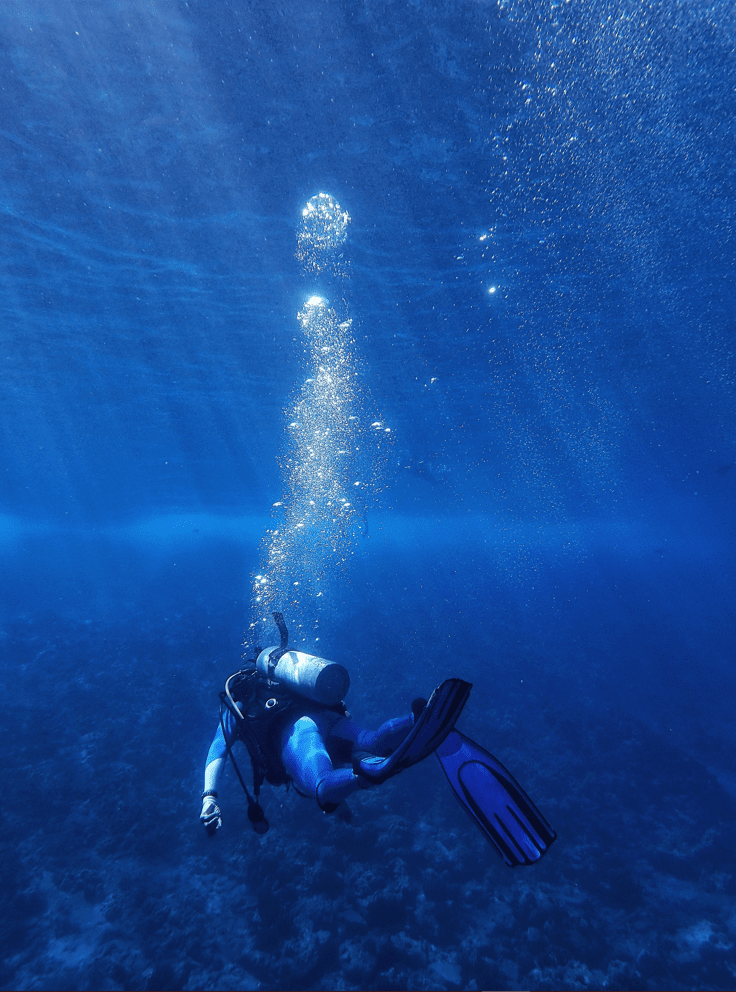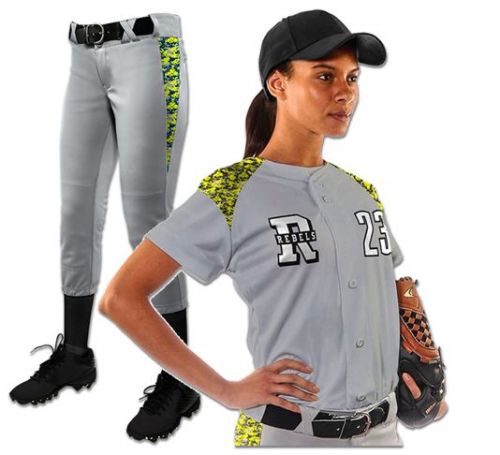Title:
Introduction
Sports diving, often simply referred to as diving, is a breathtaking and exhilarating underwater activity that combines adventure, skill, and a deep connection with the aquatic world. Whether you’re a novice taking your first plunge into the underwater realm or an experienced diver seeking new challenges, sports diving offers an unparalleled opportunity to explore the hidden wonders of the world beneath the waves. In this comprehensive guide, we’ll delve into the fascinating world of sports diving, covering its history, types, equipment, safety measures, training, and the most captivating diving destinations around the globe. Prepare to be mesmerized by the enchanting world that lies beneath the water’s surface.
The History of Sports Diving
Sports diving has a rich and storied history, dating back to ancient civilizations where it was primarily a means of gathering food and valuable resources from the sea. Early divers used rudimentary tools and techniques to explore underwater environments, which were often treacherous and perilous.
In the modern context, diving began to evolve as a recreational activity in the early 20th century when innovative pioneers developed equipment that allowed divers to venture deeper and stay submerged for longer periods. The introduction of the aqualung, or scuba gear, in the mid-20th century marked a pivotal moment in the history of sports diving, as it enabled divers to explore the depths with greater ease and safety.
Today, sports diving has become a popular adventure sport and a means of exploring the natural beauty of the underwater world. It has also become an important tool for scientific research, underwater archaeology, and marine conservation efforts.
Types of Sports Diving
Sports diving encompasses a wide range of sub-disciplines, each offering unique experiences and challenges. Here are some of the most popular types of sports diving:
-
Scuba Diving: Scuba diving is the most common and widely practiced form of sports diving. It involves the use of self-contained underwater breathing apparatus (scuba gear), allowing divers to explore underwater environments while breathing compressed air from a tank. Scuba diving can be further divided into recreational and technical diving, each with its own set of skills and equipment requirements.
-
Freediving: Freediving, also known as breath-hold diving, is a discipline in which divers rely on their lung capacity to explore underwater environments without the use of breathing apparatus. Freedivers can achieve impressive depths and durations underwater, showcasing remarkable physical and mental endurance.
-
Cave Diving: Cave diving is an advanced form of diving that involves exploring underwater caves and caverns. It requires specialized training and equipment due to the unique challenges presented by navigating narrow, often dark, and confined spaces.
-
Wreck Diving: Wreck diving enthusiasts explore sunken ships, planes, and other underwater wrecks. This type of diving offers a unique blend of history and adventure, as divers get to explore maritime artifacts and ecosystems that have developed around these artificial reefs.
-
Night Diving: Night diving is a thrilling experience where divers explore underwater environments after dark. The underwater world takes on a completely different character at night, with many creatures and corals coming to life in the darkness. Divers typically use specialized underwater lights for visibility.
-
Underwater Photography and Videography: Underwater photographers and videographers capture the mesmerizing beauty of the underwater world, from vibrant coral reefs to the elusive marine life. This sub-discipline requires a combination of diving skills and photography expertise.
Essential Diving Equipment
Diving relies on specialized equipment to ensure safety and enable exploration. Here’s a breakdown of some of the key gear and tools divers use:
-
Diving Mask: A mask creates an air pocket for the eyes, allowing clear vision underwater. It should provide a comfortable seal and fit for the diver’s face.
-
Snorkel: A snorkel is a breathing tube that allows divers to breathe on the surface without wasting the air in their tanks. It’s used for surface swimming and surface breathing.
-
Fins: Fins help divers move efficiently through the water. There are various types of fins, including open-heel and full-foot designs, each suited to different diving styles.
-
Wetsuit or Drysuit: Divers wear wetsuits or drysuits to maintain their body temperature and protect themselves from cold water. Wetsuits are made of neoprene and trap a thin layer of water against the body, while drysuits keep the diver dry and require insulating undergarments.
-
BCD (Buoyancy Control Device): The BCD allows divers to control their buoyancy underwater. It can be inflated or deflated to maintain proper buoyancy, enabling divers to hover or ascend and descend as needed.
-
Regulator: The regulator is a crucial component of scuba diving gear, as it delivers compressed air from the tank to the diver’s mouthpiece. It consists of a first stage, second stage, and alternate air source for safety.
-
Dive Computer: A dive computer tracks essential information such as depth, dive time, and nitrogen levels in the body to help divers avoid decompression sickness. It provides real-time data to ensure safe diving profiles.
-
Dive Knife: A dive knife is a safety tool that divers carry to cut themselves free in case they become entangled in underwater obstacles, such as fishing lines or nets.
-
Underwater Lights: Underwater lights are used for night diving or exploring dark spaces. They provide visibility and enhance the beauty of the underwater world.
-
Dive Bag: A sturdy dive bag is essential for carrying and protecting your equipment while traveling to dive destinations.
Safety Measures in Sports Diving
Safety is paramount in sports diving, as underwater environments can pose various risks. Here are some essential safety measures every diver should follow:
-
Dive Training: Proper training and certification from reputable organizations, such as the Professional Association of Diving Instructors (PADI) or Scuba Schools International (SSI), are essential for all divers. Training covers dive theory, equipment use, and safety procedures.
-
Buddy System: Diving with a buddy is a fundamental safety practice. Diving partners can assist in emergencies and monitor each other’s well-being during the dive.
-
Dive Planning: Divers should create dive plans that include depth limits, bottom times, and ascent rates. Proper planning ensures that divers avoid decompression sickness and oxygen toxicity.
-
Equalization: Equalizing the pressure in the ears and sinuses is vital to prevent barotrauma. Divers should learn proper equalization techniques to avoid ear injuries.
-
Monitoring Air Supply: Keeping track of air supply is crucial. Divers should follow the rule of thirds, which reserves one-third of their air for the return journey.
-
Respecting Wildlife: Divers should maintain a safe distance from marine life and refrain from touching or disturbing the underwater environment.
-
Staying Hydrated: Proper hydration helps prevent dehydration, which can increase the risk of decompression sickness.
-
Alcohol and Diving: Avoid alcohol consumption before or during dives, as it impairs judgment and coordination.
-
Emergency Equipment: Carry essential emergency equipment, such as a surface marker buoy (SMB) and a signaling device, to alert boats or other divers in case of an emergency.
Training for Sports Diving
Obtaining proper training is a crucial step in becoming a skilled and responsible diver. Diving courses are typically offered by recognized organizations and include the following levels:
-
Open Water Diver: The Open Water Diver course is an entry-level certification that covers the basics of scuba diving. It includes classroom instruction, pool training, and open-water dives. Upon completion, divers are certified to dive up to 18 meters (60 feet).
-
Advanced Open Water Diver: This course builds on the skills learned in the Open Water Diver course. Divers gain experience in various diving specialties, including deep diving, underwater navigation, and night diving. It allows divers to explore deeper depths and more challenging environments.
-
Rescue Diver: The Rescue Diver course focuses on accident prevention and management. Divers learn how to assist others in emergency situations, making it a critical step for those interested in becoming responsible diving partners.
-
Divemaster: A Divemaster is a leadership-level certification for divers interested in assisting with training and leading dives. It involves extensive theoretical knowledge, practical training, and underwater skills assessments.
-
Specialty Courses: Various specialty courses are available for divers interested in specific aspects of diving, such as wreck diving, cave diving, or underwater photography. These courses provide specialized training for unique diving experiences.
-
Professional Level Courses: For those who aspire to become dive instructors, professional-level courses are available to attain certifications such as Assistant Instructor and Open Water Scuba Instructor.
Diving Destinations Around the Globe
Sports diving offers access to some of the most stunning and diverse underwater environments on Earth. Here are a few top diving destinations around the world:
Discover the latest in sports news, scores, and analysis Acrobat gymnastic and Cycle ball. Stay updated on your favorite teams and athletes with us
-
The Great Barrier Reef, Australia: This iconic reef is the world’s largest and is home to an incredible variety of marine life, including colorful corals, sharks, turtles, and countless fish species.
-
Palau, Micronesia: Palau is renowned for its vibrant coral reefs, underwater caves, and a stunning lake filled with jellyfish that have lost their sting over generations.
-
Galápagos Islands, Ecuador: These remote islands are a UNESCO World Heritage Site and a biodiversity hotspot. Divers can encounter schools of hammerhead sharks, sea lions, and marine iguanas.
-
Blue Hole, Belize: The Blue Hole is a massive sinkhole in the Belize Barrier Reef. It offers a unique diving experience with crystal-clear waters and the chance to see reef sharks and other pelagic species.
-
Raja Ampat, Indonesia: Raja Ampat is often called the “Last Paradise on Earth” due to its pristine coral reefs and unparalleled marine biodiversity.
-
Red Sea, Egypt: The Red Sea is known for its clear waters, vibrant coral gardens, and historical wrecks, making it a favorite for divers seeking both natural beauty and underwater history.
-
Sipadan, Malaysia: This small island is famous for its dramatic drop-offs and an abundance of marine life, including turtles, reef sharks, and schools of barracuda.
-
Cenotes, Mexico: These natural sinkholes provide unique cave diving opportunities with stunning limestone formations and crystal-clear freshwater.
Conclusion
Sports diving is a mesmerizing and captivating activity that allows divers to explore the enchanting world hidden beneath the ocean’s surface. From its historical roots to its diverse types, equipment, safety measures, and breathtaking diving destinations, it offers an incredible range of experiences for adventurers of all levels. As you embark on your own diving journey, always remember that safety, training, and respect for the underwater environment are paramount. Dive deep, explore the unknown, and discover the magic of sports diving.












